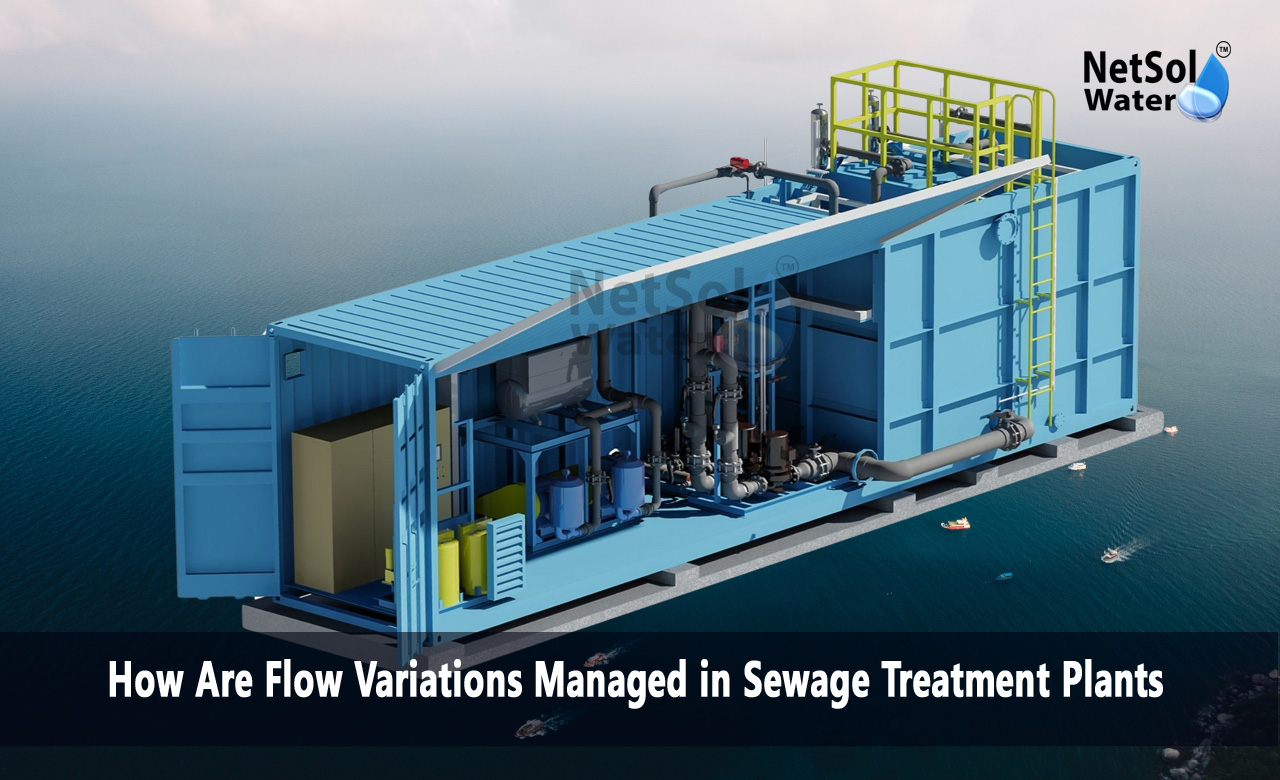How Are Flow Variations Managed in Sewage Treatment Plants?
Sewage treatment plants have the major role in maintaining our surroundings clean by treating wastewater before discharging it into nature. The biggest challenge for these plants is the continuous fluctuation of incoming wastewater. This fluctuation is referred to as "flow variation." At times, the flow will be extremely high, and at other times, it will be extremely low. Controlling these fluctuations is necessary for the plant to function correctly and safeguard public health. We will see how flow variations are managed in sewage treatment plants, how it is done, and why it is necessary.
What Triggers Flow Changes?
Before we discuss how the flow is controlled, it is essential to know what triggers these changes. Flow variations may occur due to various reasons:
· Time of day: Water demand is greater in the morning and evening in most locations.
· Weather conditions: Rain adds to flow because stormwater flows into the sewer system.
· Industrial discharge: Industries and companies can release significant volumes of water at certain times.
· Population activities: Occasions, celebrations, or sudden changes in population can also affect flow rates.
All of these variables make the flow rate fluctuate, which can stress treatment systems if not controlled appropriately.
Techniques to Manage Flow Fluctuations
There are numerous techniques on how flow variations are managed in sewage treatment plants s, each playing its part in ensuring the plant operates efficiently and effectively.
Flow Equalization Tanks
One of the most prevalent methods for controlling flow changes is through the utilization of flow equalization tanks. The tanks hold excess water during peak flows and release it slowly when flows are low. This maintains the plant in a steady state for treating water, which keeps the system in balance and minimizes the risk of overflow or system failure.
Automated Flow Control Systems
Currently, treatment plants employ technology to monitor and regulate the flow. Control valves and sensors are used to measure incoming flow and real-time adjustment of the system. Such systems respond quickly to respond to changes in flow, which enhances the quality of treatment and also protects equipment from damage.
Multiple Treatment Units
Some plants have more than one treatment unit working together. When the flow increases, more units are activated to handle the extra load. When the flow decreases, only a few units operate. This method helps save energy and maintain treatment quality.
Holding Basins and Wet Weather Storage
In high-rainfall areas, stormwater is typically collected by holding basins in vegetation. This keeps the additional water from rushing into the treatment system as a whole. The water is instead treated when the flow is less as it is stored. This is one of the most important ways that flow variations are managed in sewage treatment plants, particularly during rainy months.
Importance of Managing Flow Variations
Flow variations management is not merely to keep the plant operating. It has numerous other advantages:
· Avoids overloading: Excessive flow can destroy machines and overflow untreated water.
· Ensures treatment quality: Consistent flow enables bacteria and treatment systems to function as they should.
· Saves cost and energy: Avoiding unnecessary treatment when flow is low saves resources.
· Conserves the environment: Safely treated water is harmless for rivers, lakes, and the people living around them.
In summary, flow management keeps the plant in good health and ensures that people and nature are safeguarded.
Challenges of Flow Management
Although there are numerous systems in place, it is not easy to manage flow. These are some of the general challenges:
· Unexpected storms: The system may still get overwhelmed by unexpected heavy rain.
· Gone are the days: The older plants might lack contemporary tools for flow management.
· Unintended releases: Illegal or inadvertent waste dumping can lead to an unexpected increase in flow.
· Population growth: When cities expand, there is more wastewater created, which puts additional stress on treatment plants.
Regular upgrading and intelligent planning must be used to tackle these problems. Training personnel, employing more efficient equipment, and tracking data can contribute to enhanced flow control over the long term.
Conclusion
Managing flow changes is an essential part of running a successful sewage treatment plant. Whether it's through the application of equalization tanks, advanced control systems, or intelligent storage methods, every step ensures that the plant operates optimally even when the water coming in continues to change. So, when we wonder, how are flow variations managed in sewage treatment plants, the solution lies in a combination of intelligent planning, robust infrastructure, and application of the right tools at the right moment. Through an understanding and resolution of this problem, we contribute to making our cities cleaner, healthier, and better equipped to face the future.
Do you need an advice or assistance on selecting the best water and waste water treatment unit? We have solutions for all your problems!
Let us know your problem, our experts will make sure that it goes away.
For an assistance or related query,
Call on +91-9650608473 Or write us at enquiry@netsolwater.com



